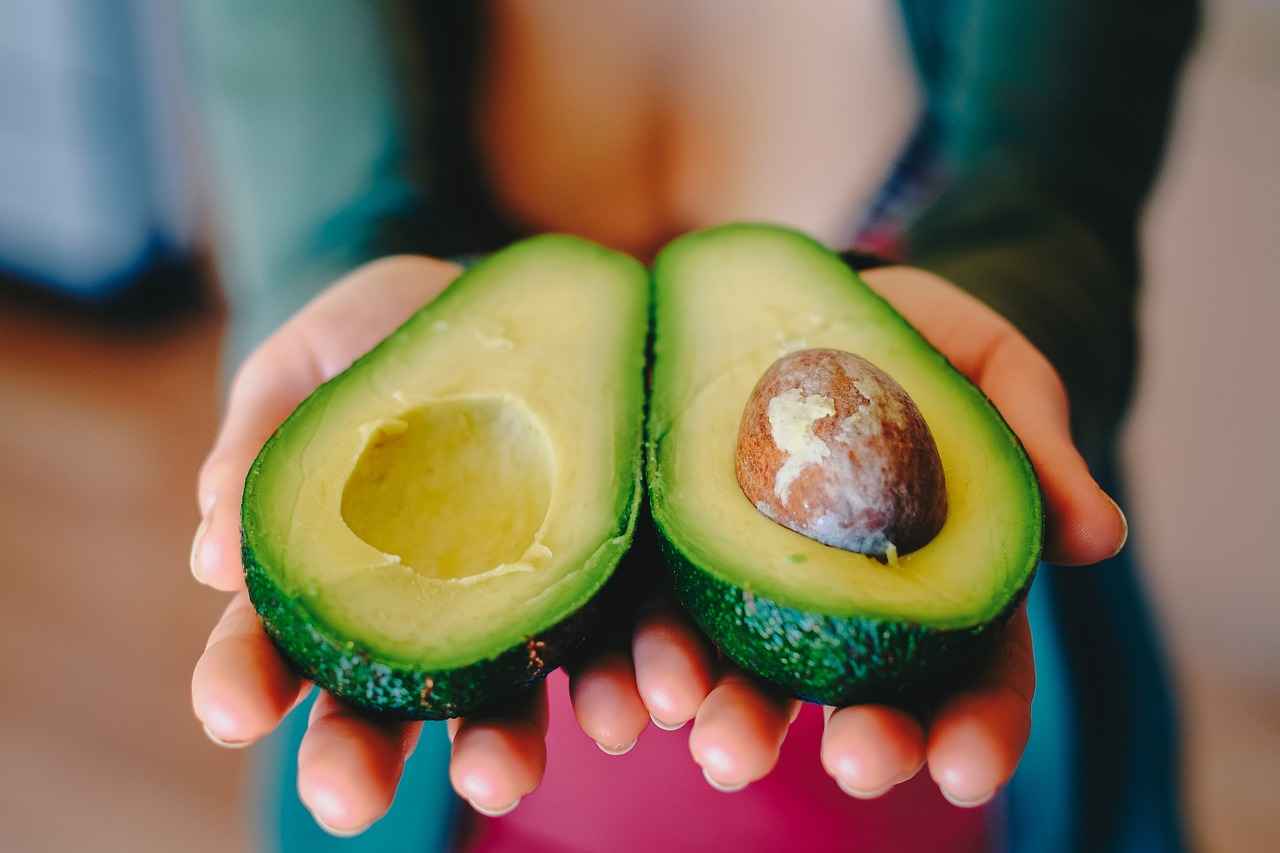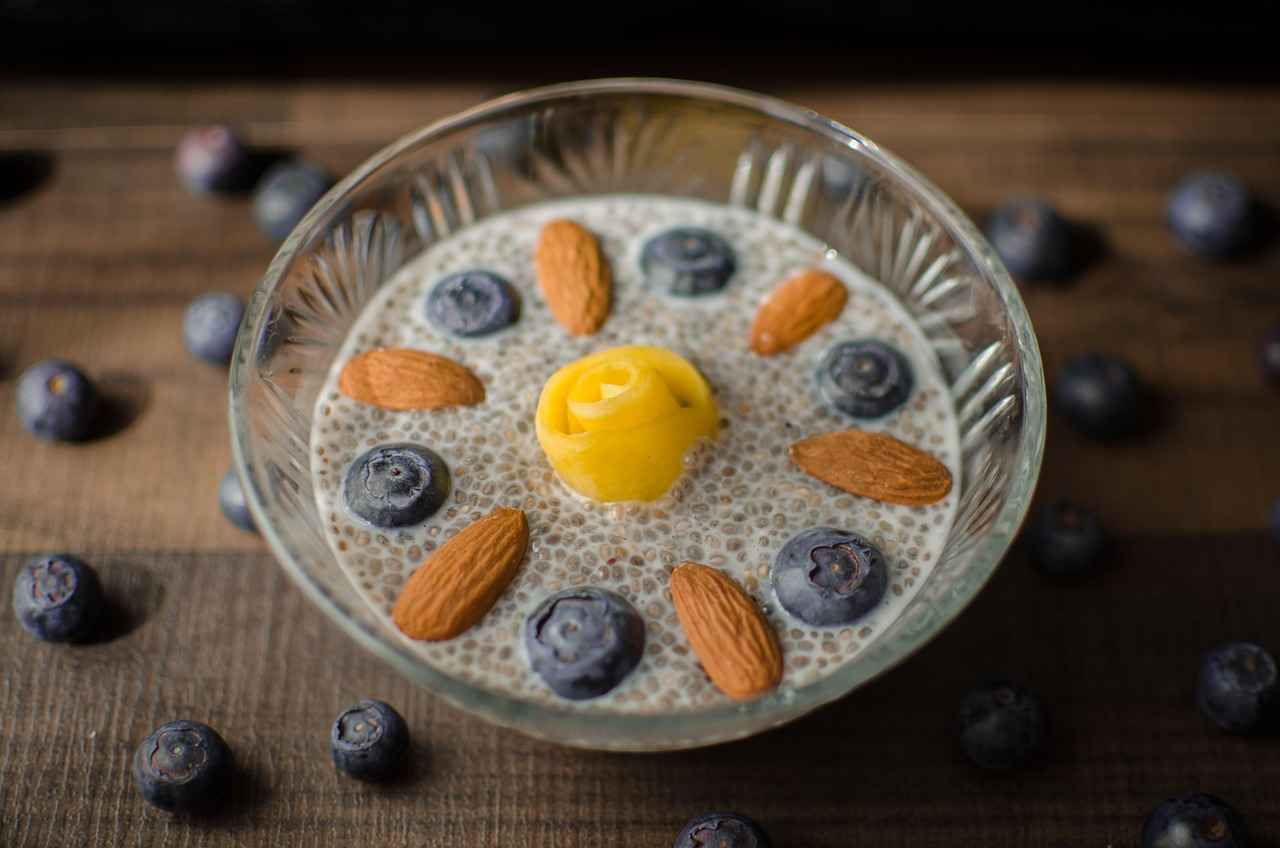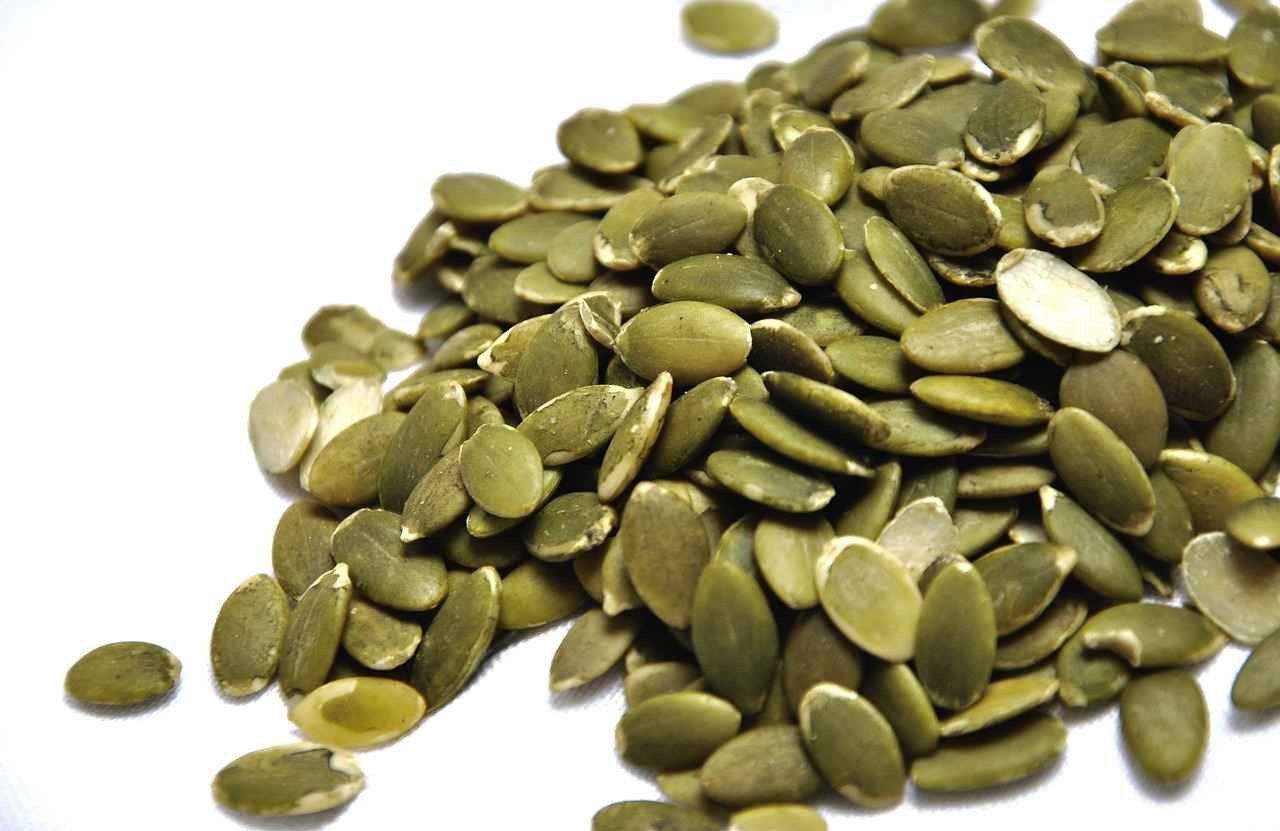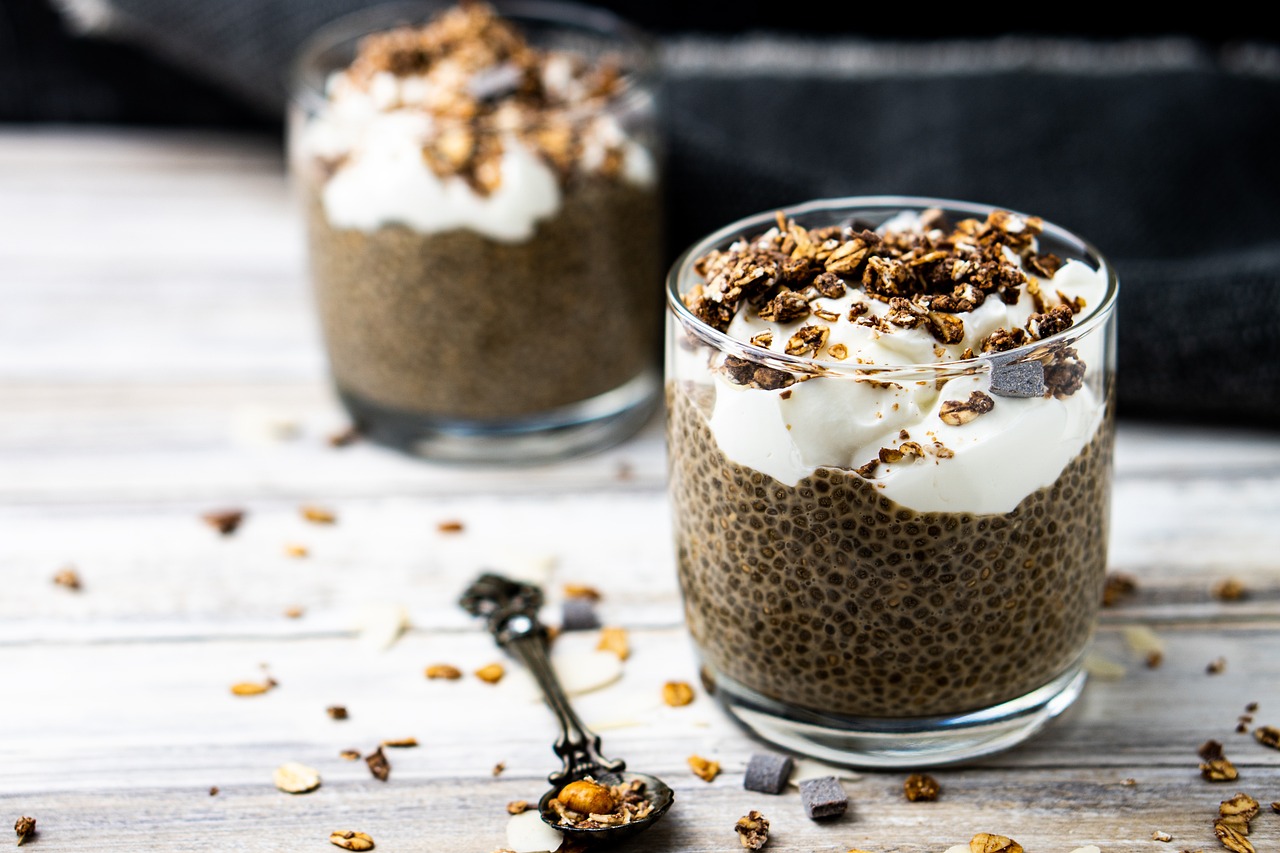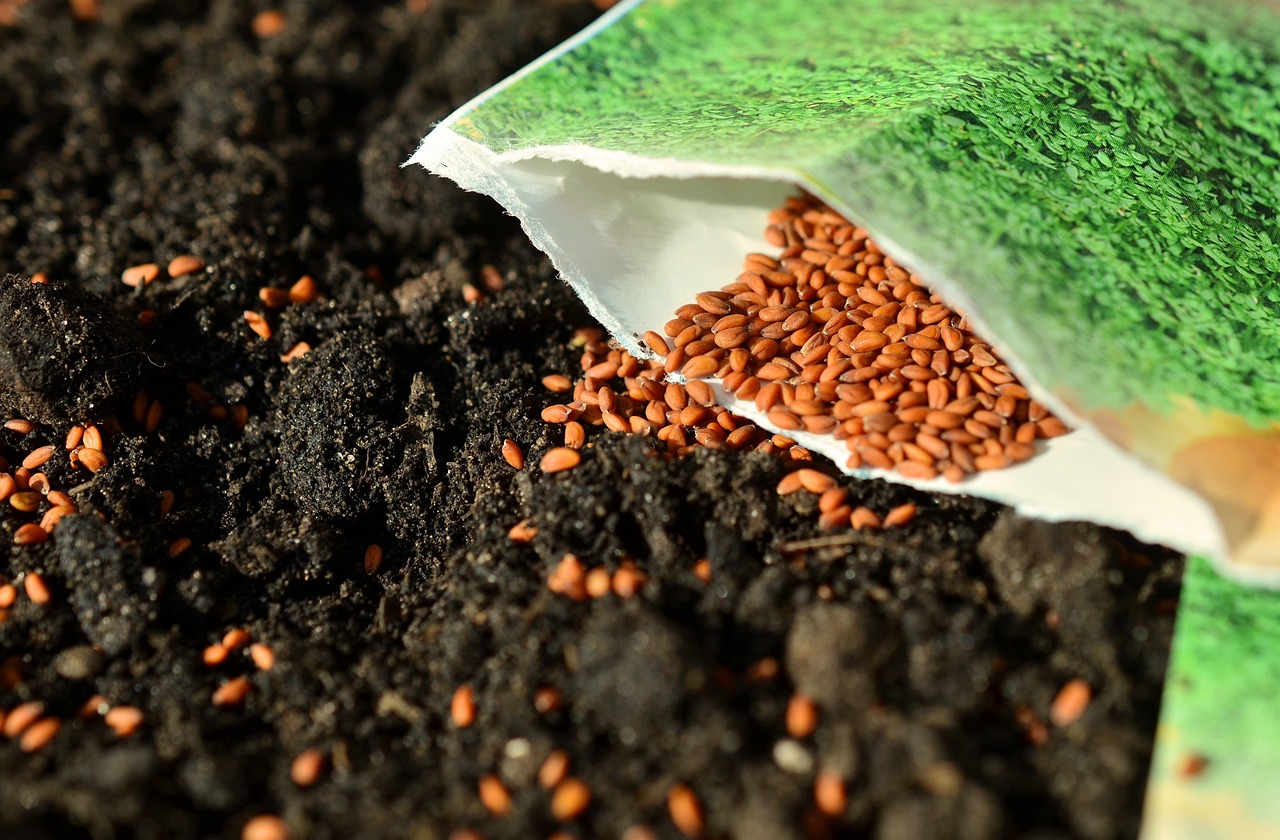This article delves into the remarkable fiber content found in chia seeds and examines their myriad digestive benefits. With a focus on their nutritional profile, readers will gain practical insights on how to seamlessly incorporate these tiny yet powerful seeds into their daily diet.
What Are Chia Seeds?
Chia seeds, derived from the Salvia hispanica plant, are tiny black seeds celebrated for their exceptional nutritional value. Rich in fiber, omega-3 fatty acids, and antioxidants, they have earned the title of a superfood. These seeds not only enhance the flavor of meals but also contribute significantly to overall health.
How Much Fiber Is in Chia Seeds?
Chia seeds boast an impressive fiber content, containing approximately 34 grams of fiber per 100 grams. This places them among the richest sources of dietary fiber available, making them an excellent choice for those looking to boost their daily fiber intake.
Types of Fiber in Chia Seeds
Chia seeds offer a unique blend of soluble and insoluble fiber, both of which play vital roles in maintaining digestive health. Soluble fiber forms a gel-like substance in the gut, while insoluble fiber adds bulk to stool, promoting regular bowel movements.
What Are the Benefits of Soluble Fiber?
- Helps regulate blood sugar levels
- Lowers cholesterol levels
- Improves overall gut health
What Are the Benefits of Insoluble Fiber?
- Prevents constipation
- Supports a healthy digestive system
- Promotes regularity
How Do Chia Seeds Aid Digestion?
Chia seeds enhance digestion by absorbing water and expanding in the stomach, which can promote feelings of fullness. This characteristic may assist in weight management by reducing the likelihood of overeating.
What Are the Other Nutritional Benefits of Chia Seeds?
Beyond fiber, chia seeds are packed with essential nutrients, including protein, healthy fats, vitamins, and minerals, making them a well-rounded addition to a balanced diet.
Protein Content in Chia Seeds
Chia seeds contain about 17 grams of protein per 100 grams, providing a plant-based protein source that is beneficial for muscle health and overall nutrition.
Omega-3 Fatty Acids in Chia Seeds
These seeds are an excellent source of alpha-linolenic acid (ALA), a type of omega-3 fatty acid known for supporting heart health and reducing inflammation.
How to Incorporate Chia Seeds into Your Diet?
Incorporating chia seeds into your diet is simple and versatile. They can be sprinkled on salads, blended into smoothies, or used to create delicious chia pudding, enhancing both flavor and nutrition.
Chia Seed Recipes for Digestive Health
- Chia Pudding: Combine chia seeds with almond milk and let them soak overnight for a nutritious breakfast.
- Energy Bars: Mix chia seeds with nuts and dried fruits for a healthy snack.
- Smoothies: Blend chia seeds into your favorite smoothie for an added nutritional boost.
Tips for Preparing Chia Seeds
To maximize their nutritional benefits, soak chia seeds in water or milk before consumption. This process enhances their digestibility and makes them easier to incorporate into various dishes.
Potential Side Effects of Chia Seeds
While chia seeds are generally safe, consuming them in excessive amounts may lead to digestive discomfort, such as bloating or gas, particularly if not consumed with adequate water.
Recommended Serving Size
A typical serving of chia seeds is about 1-2 tablespoons, which provides a significant amount of fiber without overwhelming your digestive system.
Who Should Avoid Chia Seeds?
Individuals with certain digestive disorders or those who have difficulty swallowing should consult a healthcare professional before adding chia seeds to their diet.
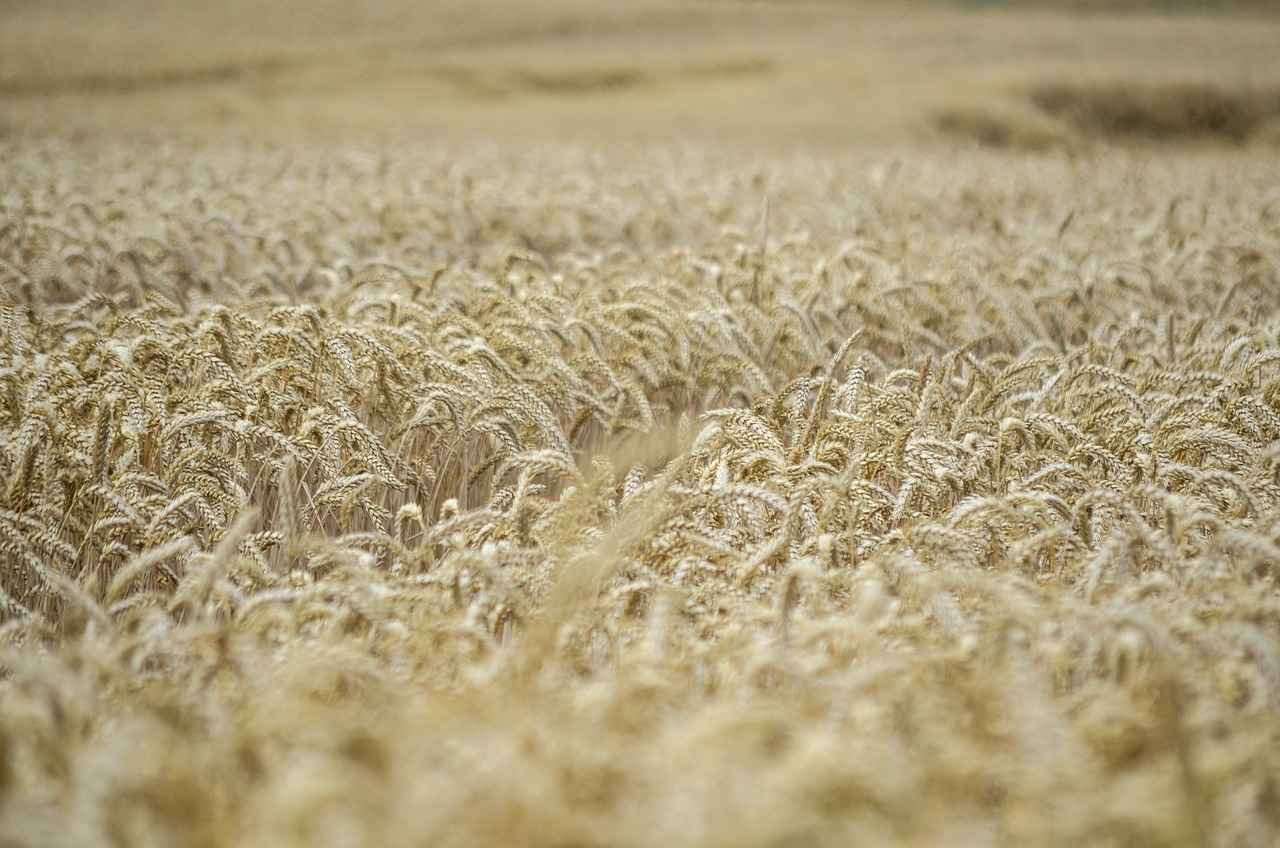
What Are Chia Seeds?
Chia seeds, derived from the Salvia hispanica plant, are tiny black seeds that have gained immense popularity as a superfood. These seeds are not only versatile in culinary applications but also boast an impressive nutritional profile that makes them a valuable addition to any diet.
Chia seeds are often hailed as a powerhouse of nutrients. They are rich in fiber, omega-3 fatty acids, and a variety of antioxidants, making them a favorite among health enthusiasts. These tiny seeds are native to Central America and were a staple food for ancient civilizations such as the Aztecs and Mayans.
The term superfood refers to foods that are exceptionally nutrient-dense and beneficial for health. Chia seeds fit this description perfectly due to their high content of:
- Fiber: Approximately 34 grams per 100 grams, contributing significantly to daily dietary fiber needs.
- Omega-3 Fatty Acids: Particularly alpha-linolenic acid (ALA), which supports heart health.
- Protein: About 17 grams per 100 grams, making them a great plant-based protein source.
- Vitamins and Minerals: Including calcium, magnesium, and phosphorus, which are vital for bone health.
Chia seeds are not just a trend; they offer numerous health benefits, particularly for digestion. Their high fiber content aids in promoting regular bowel movements and preventing constipation. Additionally, the soluble fiber in chia seeds forms a gel-like substance in the gut, which can help regulate blood sugar levels and lower cholesterol.
Integrating chia seeds into your daily meals is simple and rewarding. Here are some practical ways to enjoy them:
- Chia Pudding: Mix chia seeds with your choice of milk or yogurt and let them soak overnight for a nutritious breakfast.
- Smoothies: Blend chia seeds into your favorite smoothie for added thickness and nutrition.
- Salads: Sprinkle chia seeds over salads for a delightful crunch and nutritional boost.
- Baking: Incorporate them into baked goods like muffins or energy bars for enhanced texture and health benefits.
While chia seeds are generally safe for most people, consuming them in excessive amounts can lead to digestive discomfort, such as bloating or gas. It is essential to drink plenty of water when consuming chia seeds to help them expand and aid digestion.
Individuals with specific digestive disorders or those who have difficulty swallowing should consult a healthcare professional before adding chia seeds to their diet. It’s always best to approach new foods with caution, especially if you have underlying health conditions.
In conclusion, chia seeds are a remarkable addition to any diet, offering a wealth of nutrients and health benefits. Their versatility makes them easy to incorporate into various dishes, enhancing both flavor and nutrition.
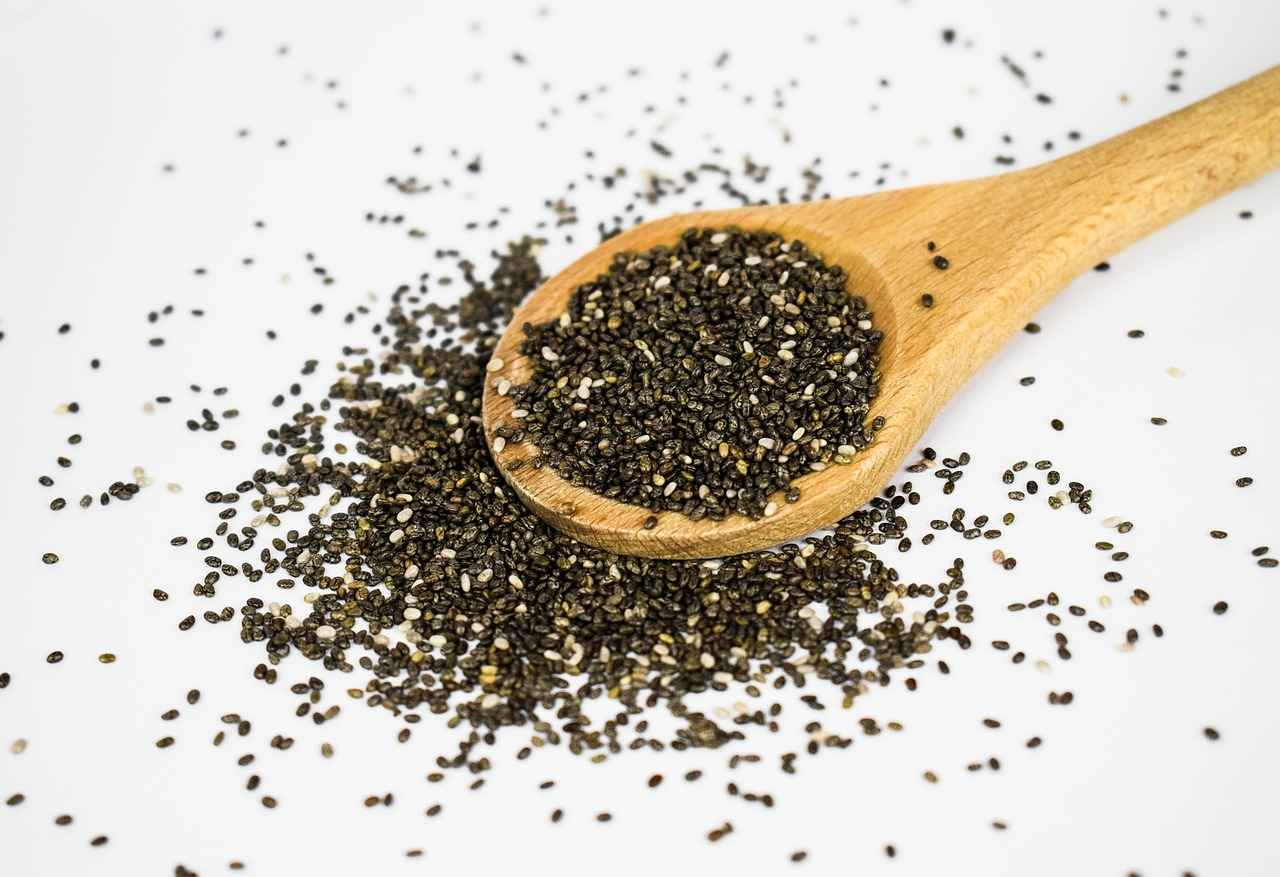
How Much Fiber Is in Chia Seeds?
Chia seeds are often hailed as a superfood due to their impressive nutritional profile. One of the standout features of these tiny seeds is their remarkably high fiber content. In fact, chia seeds contain approximately 34 grams of fiber per 100 grams. This places them among the richest sources of dietary fiber available, making them an excellent choice for those looking to boost their fiber intake.
The fiber content in chia seeds is not just impressive; it plays a vital role in maintaining digestive health. With a significant contribution to daily fiber intake recommendations, incorporating chia seeds into your diet can help you meet your nutritional goals. But what does that mean for your body?
Chia seeds are unique in that they provide both soluble and insoluble fiber. Each type serves different functions in the body:
- Soluble Fiber: This type of fiber dissolves in water, forming a gel-like substance in the gut. It helps regulate blood sugar levels and can lower cholesterol, which is beneficial for heart health.
- Insoluble Fiber: Unlike soluble fiber, this type does not dissolve in water. It adds bulk to the stool, promoting regular bowel movements and preventing constipation.
Chia seeds can significantly enhance digestion thanks to their ability to absorb water. When soaked, they expand and form a gel-like consistency, which not only aids in digestion but also promotes a feeling of fullness. This can be particularly helpful for individuals looking to manage their weight or reduce overeating.
Beyond their fiber content, chia seeds are a powerhouse of nutrients. They contain approximately 17 grams of protein per 100 grams, making them a valuable plant-based protein source. Additionally, chia seeds are rich in omega-3 fatty acids, specifically alpha-linolenic acid (ALA), which is known to support heart health and reduce inflammation.
Incorporating chia seeds into your meals is simple and versatile. Here are some practical tips:
- Add them to smoothies for a nutritional boost.
- Sprinkle them on salads or yogurt for added texture.
- Use them in baking or to create delicious chia pudding.
There are numerous ways to enjoy chia seeds while maximizing their digestive benefits. Some popular recipes include:
- Chia Pudding: Combine chia seeds with milk or a dairy-free alternative, sweeten to taste, and let it sit overnight.
- Energy Bars: Use chia seeds as a binding agent in homemade energy bars.
- Smoothies: Blend chia seeds into your favorite smoothie for added fiber and nutrients.
While chia seeds are generally safe for most individuals, consuming them in excessive amounts may lead to digestive discomfort, such as bloating or gas, especially if not paired with sufficient water. It’s recommended to start with a small serving size, typically 1-2 tablespoons, to allow your body to adjust.
Individuals with certain digestive disorders or those who have difficulty swallowing should consult a healthcare professional before adding chia seeds to their diet. It’s essential to ensure that these seeds are suitable for your individual health needs.
In summary, chia seeds are a nutrient-dense food that offers numerous health benefits, particularly for digestion. With their high fiber content and versatility, they can easily be integrated into a balanced diet.
Types of Fiber in Chia Seeds
Chia seeds, often hailed as a superfood, are not only rich in nutrients but also provide a remarkable amount of fiber. Approximately 34 grams of fiber per 100 grams makes them a powerhouse for digestive health. The fiber in chia seeds can be categorized into two main types: soluble fiber and insoluble fiber. Each type plays a distinct and vital role in maintaining a healthy digestive system.
- Soluble Fiber: This type of fiber dissolves in water, forming a gel-like substance in the gut. Soluble fiber is known for its ability to help regulate blood sugar levels by slowing down the absorption of sugar into the bloodstream. This can be particularly beneficial for individuals managing diabetes or those looking to maintain stable energy levels throughout the day.
- Insoluble Fiber: Unlike soluble fiber, insoluble fiber does not dissolve in water. Instead, it adds bulk to the stool, aiding in the movement of food through the digestive tract. This type of fiber is crucial for preventing constipation and promoting regular bowel movements, thereby supporting overall digestive health.
The combination of these two types of fiber in chia seeds creates a balanced approach to digestive wellness. Soluble fiber can help improve the gut environment by fostering the growth of beneficial bacteria, while insoluble fiber ensures that waste is efficiently eliminated from the body.
Moreover, the fiber content in chia seeds can aid in nutrient absorption. By promoting a healthy gut lining and facilitating regular digestion, chia seeds can enhance the body’s ability to absorb essential vitamins and minerals from the foods we consume. This is particularly important for individuals who may have digestive issues that hinder nutrient uptake.
Incorporating chia seeds into your diet can be an easy and effective way to increase your fiber intake. Here are some practical tips for doing so:
- Add chia seeds to your morning smoothie for a fiber boost.
- Sprinkle them on top of salads or yogurt for added texture and nutrition.
- Use chia seeds in baking, such as in muffins or energy bars, to enhance the fiber content of your snacks.
When consuming chia seeds, it is essential to hydrate them before eating. Soaking chia seeds in water or milk allows them to expand and become easier to digest. This preparation method not only maximizes their nutritional benefits but also helps in preventing any potential digestive discomfort that may arise from consuming dry seeds.
In summary, the fiber content in chia seeds is a vital component of their nutritional profile. The presence of both soluble and insoluble fiber contributes significantly to digestive health, promoting regularity and enhancing nutrient absorption. By incorporating chia seeds into your daily diet, you can harness these benefits and support your overall well-being.
Soluble Fiber Benefits
Soluble fiber is a crucial component of a healthy diet, and chia seeds are among the richest sources available. This type of fiber dissolves in water, forming a gel-like substance in the digestive tract, which plays a significant role in maintaining overall health. In this section, we will explore the numerous benefits of soluble fiber found in chia seeds, particularly its impact on blood sugar regulation and cholesterol management.
One of the standout benefits of soluble fiber is its ability to help regulate blood sugar levels. When consumed, chia seeds absorb water and swell, creating a viscous gel. This gel slows down the absorption of sugars from the food we eat, leading to a more gradual rise in blood glucose levels. This is particularly beneficial for individuals with diabetes or those at risk of developing the condition. By keeping blood sugar levels stable, soluble fiber can help prevent the spikes and crashes that often lead to cravings and overeating.
Another significant advantage of soluble fiber is its ability to lower cholesterol levels. The gel-like consistency of soluble fiber binds to cholesterol in the digestive system, preventing its absorption into the bloodstream. This process not only helps reduce overall cholesterol levels but also contributes to a healthier heart. Regular consumption of chia seeds can thus be a simple yet effective way to support cardiovascular health.
The gel-forming property of soluble fiber in chia seeds also aids in digestion. By creating a smooth, slippery texture in the gut, it facilitates the movement of food through the digestive tract, which can help alleviate issues such as constipation and promote regular bowel movements. Additionally, the presence of soluble fiber can enhance the growth of beneficial gut bacteria, further supporting digestive health.
Soluble fiber is not just about digestion; it also plays a vital role in maintaining a healthy gut microbiome. A balanced gut microbiome is essential for overall health, as it influences everything from immune function to mental well-being. By incorporating chia seeds into your diet, you can provide your gut with the necessary nutrients to thrive.
- Chia Pudding: Mix chia seeds with milk or a dairy-free alternative and let them soak overnight for a nutritious breakfast.
- Smoothies: Add a tablespoon of chia seeds to your favorite smoothie for an extra fiber boost.
- Baking: Incorporate chia seeds into muffins, breads, or energy bars for added texture and nutrition.
A typical serving size of chia seeds is about 1-2 tablespoons. This amount provides a substantial dose of soluble fiber without overwhelming your digestive system. It’s essential to drink plenty of water when consuming chia seeds, as their high fiber content can lead to digestive discomfort if not adequately hydrated.
Chia seeds can be beneficial for most individuals, especially those looking to improve their digestive health and manage their blood sugar and cholesterol levels. However, people with specific digestive disorders or those who experience difficulty swallowing should consult a healthcare professional before incorporating chia seeds into their diet.
In summary, the soluble fiber in chia seeds offers a multitude of benefits, from regulating blood sugar levels and lowering cholesterol to improving digestion and supporting gut health. By understanding and utilizing these benefits, you can enhance your overall well-being and make chia seeds a valuable addition to your diet.
Insoluble Fiber Benefits
Insoluble fiber is a type of dietary fiber that plays a crucial role in maintaining a healthy digestive system. Unlike soluble fiber, which dissolves in water, insoluble fiber does not dissolve and instead adds bulk to the stool. This characteristic is essential for promoting regular bowel movements and preventing constipation.
One of the primary benefits of insoluble fiber is its ability to support digestive health. By adding bulk to the stool, it helps to move food through the digestive tract more efficiently. This action can significantly reduce the risk of developing digestive disorders, such as diverticulitis and hemorrhoids, which can occur when the digestive system is not functioning properly.
Insoluble fiber also plays a vital role in maintaining a healthy weight. Foods rich in insoluble fiber tend to be more filling, which can help control appetite and reduce overall calorie intake. When included in a balanced diet, insoluble fiber can aid in weight management by promoting a feeling of fullness after meals.
| Benefit | Description |
|---|---|
| Promotes Regularity | Helps to maintain consistent bowel movements, reducing the risk of constipation. |
| Supports Digestive Health | Reduces the risk of digestive disorders by ensuring efficient food transit through the gut. |
| Aids Weight Management | Increases satiety, helping to control appetite and reduce calorie intake. |
Incorporating insoluble fiber into your diet can be simple and delicious. Foods such as whole grains, nuts, seeds, and vegetables are excellent sources. For instance, whole grain breads and brown rice are not only nutritious but also provide significant amounts of insoluble fiber. Additionally, fruits and vegetables with skins, such as apples and carrots, are also beneficial.
For those looking to increase their fiber intake, it is essential to do so gradually. A sudden increase in fiber can lead to digestive discomfort, such as bloating and gas. To mitigate these effects, it is advisable to drink plenty of water throughout the day, as this helps the fiber work effectively in the digestive system.
In conclusion, the benefits of insoluble fiber are numerous and vital for maintaining digestive health. By incorporating a variety of fiber-rich foods into your diet, you can promote regular bowel movements, support overall digestive function, and aid in weight management. Always consider your individual dietary needs and consult with a healthcare professional if you have specific concerns or conditions related to fiber intake.
How Do Chia Seeds Aid Digestion?
Chia seeds, often hailed as a superfood, are not just a trendy health addition; they play a significant role in enhancing digestive health. Their unique properties make them a valuable ally for anyone looking to improve their gut function and overall well-being.
One of the primary ways chia seeds aid digestion is through their remarkable ability to absorb water. When chia seeds are mixed with liquid, they can swell up to 12 times their original size, forming a gel-like substance. This gel not only helps to keep the digestive tract moist but also promotes a feeling of fullness. As a result, incorporating chia seeds into your meals can help manage weight by reducing the tendency to overeat. This is particularly beneficial for those who struggle with portion control.
Moreover, the high fiber content in chia seeds is another factor that contributes to their digestive benefits. Each serving contains about 10 grams of fiber, which is essential for maintaining regular bowel movements. Fiber plays a critical role in preventing constipation by adding bulk to the stool, making it easier to pass. Regular consumption of chia seeds can help ensure that your digestive system functions smoothly, reducing the risk of gastrointestinal issues.
What Types of Fiber Do Chia Seeds Contain?
- Soluble Fiber: This type of fiber dissolves in water, forming a gel-like substance that can help regulate blood sugar levels and lower cholesterol. It also slows down digestion, which can enhance nutrient absorption.
- Insoluble Fiber: This fiber does not dissolve in water and adds bulk to the stool. It is crucial for promoting regularity and preventing constipation, ensuring a healthy digestive tract.
The combination of soluble and insoluble fiber in chia seeds creates an optimal environment for digestive health. By promoting regular bowel movements and enhancing nutrient absorption, chia seeds can significantly improve your overall digestive function.
How Can You Incorporate Chia Seeds for Digestive Benefits?
Adding chia seeds to your diet is simple and versatile. Here are a few practical tips:
- Chia Pudding: Mix chia seeds with your choice of milk or yogurt and let it sit overnight. This creates a delicious and nutritious pudding that is easy to digest.
- Smoothies: Blend chia seeds into your favorite smoothie for an added fiber boost.
- Baking: Incorporate chia seeds into muffins, bread, or energy bars for a healthy twist.
To maximize their benefits, consider soaking chia seeds before consumption. Soaking helps to break down the outer shell, making the nutrients more accessible and easier for your body to digest.
Are There Any Side Effects?
While chia seeds are generally safe for most people, it’s essential to consume them in moderation. Overconsumption can lead to digestive discomfort, such as bloating or gas, especially if not consumed with adequate water. A typical serving size of 1-2 tablespoons is recommended to reap the benefits without overwhelming your digestive system.
In summary, chia seeds are a powerhouse of nutrition that can significantly enhance digestion. Their unique ability to absorb water, combined with high fiber content, makes them an excellent addition to any diet aimed at improving gut health. By incorporating chia seeds into your meals, you can enjoy their numerous benefits while supporting your overall well-being.
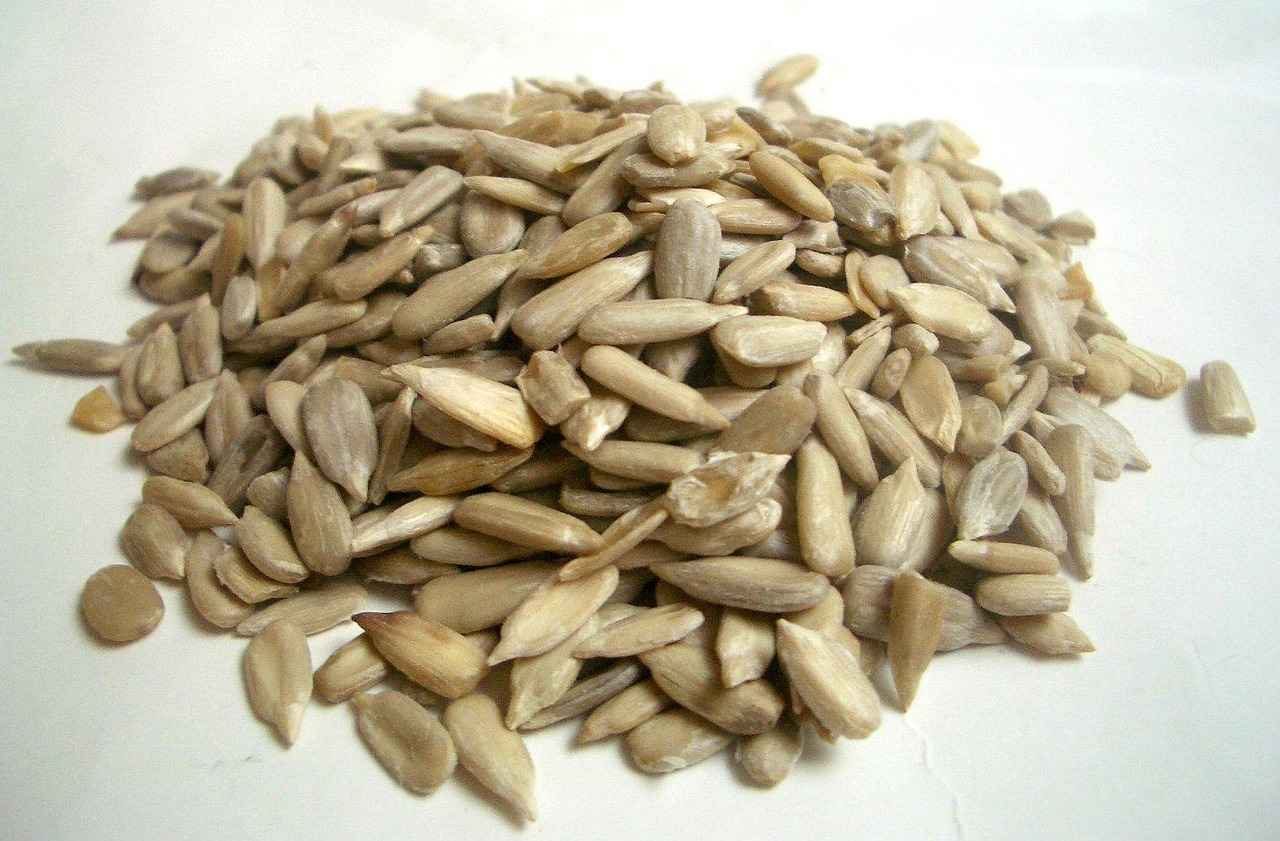
What Are the Other Nutritional Benefits of Chia Seeds?
Chia seeds have gained immense popularity as a superfood, and for good reason. While their high fiber content is widely celebrated, these tiny seeds offer a plethora of other nutritional benefits that make them a valuable addition to any diet. In this section, we will delve deeper into the various nutrients found in chia seeds, highlighting their importance for overall health.
Beyond fiber, chia seeds are packed with a variety of essential nutrients that contribute to a well-rounded diet. These include:
- Protein: Chia seeds contain approximately 17 grams of protein per 100 grams, making them an excellent plant-based protein source. This is particularly beneficial for vegetarians and vegans looking to meet their protein needs.
- Healthy Fats: Rich in omega-3 fatty acids, particularly alpha-linolenic acid (ALA), chia seeds support heart health and reduce inflammation in the body.
- Vitamins and Minerals: Chia seeds are a good source of several important vitamins and minerals, including calcium, magnesium, phosphorus, and B vitamins, which play vital roles in energy metabolism and bone health.
The protein content in chia seeds is notable for its high quality. Unlike many plant proteins, chia seeds provide all nine essential amino acids, making them a complete protein source. This is crucial for muscle repair and growth, as well as overall bodily functions.
Omega-3 fatty acids are renowned for their heart-protective properties. They help lower triglycerides, reduce blood pressure, and combat inflammation. Including chia seeds in your diet can significantly contribute to your daily intake of omega-3s, especially for those who do not consume fish.
Chia seeds are a treasure trove of essential vitamins and minerals. For instance:
| Nutrient | Amount per 100g |
|---|---|
| Calcium | 631 mg |
| Magnesium | 335 mg |
| Phosphorus | 860 mg |
| Iron | 7.7 mg |
These nutrients are essential for maintaining strong bones, supporting metabolic functions, and ensuring efficient oxygen transport in the blood.
Integrating chia seeds into your meals is simple and versatile. Here are some practical tips:
- Add them to smoothies for a nutrient boost.
- Sprinkle on yogurt or oatmeal for added texture and health benefits.
- Use them in baking as a substitute for eggs by mixing with water.
- Create chia pudding by soaking them in milk or a milk alternative overnight.
These methods not only enhance the flavor of your dishes but also significantly increase their nutritional value.
In conclusion, the nutritional profile of chia seeds extends far beyond their impressive fiber content. With their rich supply of protein, healthy fats, vitamins, and minerals, they are a versatile addition to any diet, promoting overall health and well-being.
Protein Content in Chia Seeds
Chia seeds have gained immense popularity in recent years, not just as a trendy superfood but also for their impressive nutritional profile. Among the many benefits they offer, their protein content stands out, making them a valuable addition to a variety of diets.
Chia seeds contain approximately 17 grams of protein per 100 grams, making them an excellent plant-based protein source. This is particularly significant for vegetarians and vegans who may struggle to meet their protein needs through traditional sources. The protein found in chia seeds is complete, meaning it contains all nine essential amino acids that the body cannot produce on its own.
The protein in chia seeds plays a crucial role in supporting muscle health and recovery. Consuming adequate protein is essential for muscle repair and growth, especially after exercise. Chia seeds can be an excellent option for athletes or anyone engaging in regular physical activity, as they not only provide protein but also essential nutrients that aid in recovery.
In addition to their protein content, chia seeds are rich in fiber, omega-3 fatty acids, vitamins, and minerals. They provide about 34 grams of fiber per 100 grams, which aids in digestion and promotes a feeling of fullness. This can be particularly beneficial for those looking to manage their weight or improve their digestive health.
Incorporating chia seeds into your daily meals is simple and versatile. Here are some practical tips:
- Chia Pudding: Soak chia seeds in almond milk or coconut milk overnight for a delicious breakfast or snack.
- Smoothies: Blend a tablespoon of chia seeds into your favorite smoothie for added protein and fiber.
- Baking: Add chia seeds to muffins, bread, or energy bars for a nutritional boost.
- Salads: Sprinkle chia seeds on salads for added crunch and nutrition.
While chia seeds are generally safe for most people, it’s important to consume them in moderation. Eating large quantities without sufficient water may lead to digestive discomfort, such as bloating or gas. A typical serving size of 1-2 tablespoons is recommended to reap the benefits without overwhelming your digestive system.
Chia seeds can be beneficial for a wide range of individuals, including:
- Vegetarians and vegans looking for a protein boost.
- Athletes seeking to enhance recovery and muscle health.
- Individuals aiming to improve their digestive health through increased fiber intake.
In conclusion, chia seeds are not only a rich source of protein but also offer numerous health benefits that make them a valuable addition to a balanced diet. With their versatility and ease of incorporation into various dishes, they can help support overall nutrition and well-being.
Omega-3 Fatty Acids in Chia Seeds
Chia seeds have gained immense popularity in the health community due to their remarkable nutritional profile. Among their many benefits, one of the most significant is their high content of omega-3 fatty acids, specifically alpha-linolenic acid (ALA). This article delves into the importance of ALA in chia seeds, its health benefits, and how you can easily incorporate these tiny seeds into your diet.
Omega-3 fatty acids are essential fats that the body cannot produce on its own. They must be obtained through diet. There are three main types of omega-3 fatty acids: ALA, eicosapentaenoic acid (EPA), and docosahexaenoic acid (DHA). While EPA and DHA are primarily found in fish and algae, ALA is predominantly found in plant sources, making chia seeds an excellent option for those following a vegetarian or vegan diet.
- Heart Health: ALA has been shown to support heart health by lowering cholesterol levels and reducing the risk of heart disease. Regular consumption of omega-3 fatty acids can help maintain optimal blood pressure and improve overall cardiovascular function.
- Anti-Inflammatory Properties: Omega-3 fatty acids possess potent anti-inflammatory effects that can help reduce inflammation in the body, potentially alleviating symptoms of conditions such as arthritis and inflammatory bowel disease.
- Mental Health: Research suggests that omega-3 fatty acids may play a role in reducing symptoms of depression and anxiety, promoting better mental well-being.
- Brain Function: ALA is also believed to support cognitive function and may help protect against age-related cognitive decline.
Chia seeds are one of the richest plant sources of ALA. In fact, just one ounce (about 28 grams) of chia seeds contains approximately 5 grams of ALA. This makes them an easy and effective way to boost your omega-3 intake, especially for those who do not consume fish.
Integrating chia seeds into your meals is simple and versatile. Here are a few practical tips:
- Add to Smoothies: Blend chia seeds into your favorite smoothies for a nutrient boost.
- Chia Pudding: Mix chia seeds with your choice of milk or yogurt, let them soak overnight, and enjoy a delicious pudding.
- Sprinkle on Salads: Add chia seeds to salads for added crunch and nutrition.
- Baking: Incorporate chia seeds into baked goods like muffins and bread for a healthy twist.
While chia seeds are generally safe for most people, consuming them in excessive amounts can lead to digestive discomfort, such as bloating or gas. It is important to drink plenty of water when consuming chia seeds, as they absorb liquid and expand in the stomach.
In conclusion, chia seeds are a powerhouse of nutrition, particularly due to their high content of omega-3 fatty acids. By incorporating these tiny seeds into your diet, you can enjoy numerous health benefits, from improved heart health to enhanced cognitive function. With their versatility and ease of use, chia seeds are an excellent addition to any health-conscious diet.

How to Incorporate Chia Seeds into Your Diet?
Chia seeds have gained immense popularity in recent years, and for good reason. These tiny seeds are not only packed with nutrients but also incredibly versatile, making them easy to incorporate into various meals. If you’re wondering how to incorporate chia seeds into your diet, you’re in the right place. This article will provide practical tips, creative ideas, and delicious recipes to help you enjoy the benefits of chia seeds while enhancing your meals.
Chia seeds are a powerhouse of nutrition. They are rich in fiber, protein, and omega-3 fatty acids, making them a perfect addition to any diet. Their ability to absorb liquid and form a gel-like consistency not only aids in digestion but also helps you feel full longer, which can assist in weight management.
- Sprinkle on Salads: Add a tablespoon of chia seeds to your favorite salad for a crunch and a nutritional boost.
- Blend into Smoothies: Toss in a couple of tablespoons of chia seeds into your morning smoothie for added texture and health benefits.
- Make Chia Pudding: Combine chia seeds with milk or a milk alternative, let them soak overnight, and enjoy a delicious pudding topped with fruits and nuts.
- Use in Baking: Incorporate chia seeds into muffins, breads, or energy bars for enhanced nutrition.
- Add to Yogurt: Mix chia seeds into yogurt for an extra dose of fiber and protein, making for a satisfying snack.
To truly enjoy the benefits of chia seeds, consider trying out some creative recipes:
- Chia Seed Pudding: Mix 1/4 cup of chia seeds with 1 cup of almond milk and a sweetener of your choice. Let it sit overnight in the refrigerator. In the morning, top with fruits and nuts.
- Chia Energy Bars: Blend oats, nut butter, honey, and chia seeds, press the mixture into a pan, and refrigerate until firm. Cut into bars for a healthy snack.
- Chia Fresca: Combine 1 tablespoon of chia seeds with 1 cup of water and a squeeze of lemon or lime juice for a refreshing drink.
To maximize the benefits of chia seeds, consider these preparation tips:
- Soaking: Soaking chia seeds in water or milk for at least 30 minutes helps them expand and makes them easier to digest.
- Mixing: When adding chia seeds to liquids, stir well to prevent clumping and ensure even distribution.
- Experimenting: Don’t hesitate to experiment with different recipes and combinations to find what you enjoy the most.
While chia seeds are generally safe for most people, it’s important to consume them in moderation. Drinking plenty of water is essential when consuming chia seeds, as they can absorb a significant amount of liquid. This helps prevent any digestive discomfort, such as bloating or gas, especially when consumed in large quantities.
Incorporating chia seeds into your diet can be both enjoyable and beneficial. With their versatility and nutritional value, they are an excellent addition to various meals. Whether you sprinkle them on salads, blend them into smoothies, or create delicious puddings, the possibilities are endless. Start experimenting today and discover how chia seeds can enhance your overall health and wellness.
Chia Seed Recipes for Digestive Health
Chia seeds have gained immense popularity in recent years, not only for their nutritional benefits but also for their versatility in the kitchen. Creative recipes such as chia pudding, energy bars, and smoothies can maximize the digestive benefits of chia seeds while providing variety in your meals. These recipes not only enhance the flavor but also ensure that you are getting the most out of these tiny powerhouses.
Chia seeds are packed with fiber, which is essential for maintaining a healthy digestive system. The soluble and insoluble fiber in chia seeds works together to promote regular bowel movements and improve gut health. When incorporated into meals, they can help you feel fuller for longer, potentially aiding in weight management.
Chia pudding is one of the most popular ways to enjoy chia seeds. To make this dish, simply mix chia seeds with your choice of milk (dairy or plant-based), sweetener, and flavorings like vanilla or cocoa powder. Let the mixture sit for at least 2 hours or overnight in the refrigerator. The seeds will absorb the liquid and create a creamy, pudding-like texture. This dish is not only easy to prepare but also allows for endless customization with toppings like fruits, nuts, or granola.
Homemade energy bars are another fantastic way to incorporate chia seeds into your diet. Combine oats, nut butter, honey, and chia seeds in a bowl, then press the mixture into a lined baking dish. Once set, cut into bars and enjoy a nutritious snack that is perfect for busy days. These bars are packed with protein and fiber, making them a great option for a pre-workout boost or an afternoon pick-me-up.
Smoothies are a convenient way to consume chia seeds while benefiting from their digestive properties. Add a tablespoon of chia seeds to your favorite smoothie recipe, which can include fruits, vegetables, and yogurt. The seeds will blend in seamlessly, providing added texture and nutrition without altering the flavor significantly. This is a great way to sneak in extra fiber and nutrients into your daily routine.
- Chia Seed Jam: Combine mashed fruit with chia seeds and a sweetener to create a healthy jam alternative.
- Chia Seed Pancakes: Mix chia seeds into your pancake batter for added fiber and a nutty flavor.
- Chia Seed Salad Toppers: Sprinkle chia seeds over salads for a crunchy texture and nutritional boost.
To maximize the benefits of chia seeds, it’s recommended to soak them before consumption. This not only enhances their digestibility but also allows them to expand and absorb more nutrients. Whether you choose to soak them in water or incorporate them directly into recipes, the key is to ensure they are adequately hydrated.
Incorporating chia seeds into your diet through creative recipes can significantly enhance your digestive health while adding variety to your meals. From chia pudding to energy bars and smoothies, the possibilities are endless. By experimenting with different recipes, you can enjoy the numerous health benefits chia seeds offer while keeping your meals exciting and nutritious.
Tips for Preparing Chia Seeds
Chia seeds are a powerhouse of nutrition, offering a multitude of health benefits, particularly for digestion. One effective method to enhance their digestibility is by soaking them in water or milk before consumption. This simple step not only maximizes their nutritional benefits but also makes it easier to incorporate them into various dishes.
Soaking chia seeds serves several important purposes:
- Improved Digestibility: When chia seeds are soaked, they absorb liquid and expand, forming a gel-like consistency. This process breaks down their tough outer shell, making it easier for the body to digest and absorb their nutrients.
- Enhanced Nutritional Absorption: Soaking helps release the nutrients contained within the seeds, including essential fatty acids, proteins, and minerals, ensuring that your body can utilize them effectively.
- Reduced Risk of Digestive Discomfort: Consuming dry chia seeds can lead to potential digestive issues such as bloating or gas. Soaking them mitigates this risk by ensuring they are hydrated before consumption.
Soaking chia seeds is incredibly simple and can be done in just a few steps:
- Choose Your Liquid: You can use water, almond milk, coconut milk, or any other liquid of your choice.
- Measure the Seeds: A typical ratio is 1 tablespoon of chia seeds to 3 tablespoons of liquid.
- Combine and Stir: Mix the chia seeds with the liquid in a bowl or jar. Stir well to prevent clumping.
- Let Them Soak: Allow the mixture to sit for at least 15-30 minutes. For best results, soak overnight in the refrigerator.
Once your chia seeds are soaked, the possibilities for incorporating them into your meals are endless:
- Chia Pudding: Combine soaked chia seeds with your favorite sweeteners and flavors, such as vanilla or cocoa, for a delicious pudding.
- Smoothies: Add soaked chia seeds to your smoothies for a nutrient boost without altering the flavor.
- Baking: Incorporate soaked chia seeds into muffins, breads, or energy bars for added fiber and texture.
To maintain freshness and prevent spoilage, store soaked chia seeds in an airtight container in the refrigerator. They can last for up to five days, making them a convenient option for meal prep.
In conclusion, soaking chia seeds is a simple yet effective way to enhance their digestibility and maximize their nutritional benefits. By incorporating this practice into your routine, you can enjoy the numerous health advantages that chia seeds offer while making them a versatile addition to your diet.

Potential Side Effects of Chia Seeds
Chia seeds have gained immense popularity due to their numerous health benefits, particularly in the realm of digestion. However, like any food, they come with potential side effects that consumers should be aware of.
While chia seeds are considered safe for most people, consuming them in excessive amounts can lead to various digestive issues. Understanding these potential side effects is crucial for anyone looking to incorporate chia seeds into their diet.
One of the most common complaints associated with chia seeds is bloating. This occurs primarily when chia seeds are consumed in large quantities without sufficient hydration. Chia seeds can absorb up to 12 times their weight in water, leading to expansion in the stomach. If not consumed with adequate liquid, this can cause discomfort, including:
- Bloating
- Gas
- Abdominal cramping
Moderation is key when consuming chia seeds. A typical serving size is about 1-2 tablespoons, which provides ample fiber and nutrients without overwhelming the digestive system. Exceeding this amount, especially without increasing water intake, may lead to the aforementioned digestive discomfort.
Though rare, some individuals may experience allergic reactions to chia seeds. Symptoms can include skin rashes, itching, or gastrointestinal distress. If you have a known allergy to other seeds, it is advisable to consult a healthcare professional before adding chia seeds to your diet.
Chia seeds can interact with certain medications, particularly those affecting blood sugar levels and blood pressure. Their high fiber content may also interfere with the absorption of some medications. Always consult with a healthcare provider if you are taking medication and considering adding chia seeds to your diet.
Individuals with specific digestive disorders, such as irritable bowel syndrome (IBS) or those who have difficulty swallowing, should exercise caution when consuming chia seeds. It’s advisable to consult a healthcare professional to determine if chia seeds are appropriate for your dietary needs.
To enjoy the benefits of chia seeds while minimizing potential side effects, consider the following tips:
- Soak Chia Seeds: Soaking chia seeds in water or milk for at least 30 minutes before consumption can enhance their digestibility and prevent discomfort.
- Gradual Introduction: If you are new to chia seeds, start with small amounts and gradually increase your intake to allow your digestive system to adjust.
- Hydration: Ensure adequate fluid intake when consuming chia seeds to help them expand and aid in digestion.
In summary, while chia seeds can offer a multitude of health benefits, it is essential to be aware of their potential side effects. By understanding how to consume them safely and in moderation, you can enjoy their nutritional benefits without discomfort.
Recommended Serving Size
A typical serving of chia seeds is about 1-2 tablespoons, which provides a substantial amount of fiber without overwhelming your digestive system. This small yet powerful serving can yield around 5-10 grams of fiber, depending on the exact amount you choose to consume. This fiber content is significant considering that the daily recommended fiber intake for adults is about 25-30 grams.
When you incorporate chia seeds into your diet, it’s important to understand how to maximize their benefits while ensuring that your digestive system remains comfortable. Chia seeds are unique in that they can absorb up to 12 times their weight in water, which means they can swell up and form a gel-like consistency when soaked. This property not only enhances their fiber content but also aids in promoting a feeling of fullness, which can be beneficial for weight management.
- Start Small: If you are new to chia seeds, begin with 1 tablespoon to allow your digestive system to adjust.
- Hydration is Key: Always consume chia seeds with plenty of water to prevent potential digestive discomfort.
- Soaking Method: Consider soaking chia seeds in water or milk for at least 30 minutes before consumption to enhance digestibility.
In addition to their fiber content, chia seeds are also a source of healthy fats, particularly omega-3 fatty acids, which contribute to overall health. They provide a balance of nutrients that can support not just digestive health but also heart health, making them a valuable addition to your diet.
Furthermore, chia seeds can be easily integrated into various meals. You can sprinkle them on top of salads, blend them into smoothies, or use them as an ingredient in baking. This versatility ensures that you can enjoy the benefits of chia seeds without feeling like you’re consuming the same thing repeatedly.
However, it is essential to keep in mind that while chia seeds offer numerous health benefits, moderation is crucial. Consuming too many chia seeds at once, especially without adequate hydration, can lead to symptoms such as bloating or gas. Therefore, sticking to the recommended serving size of 1-2 tablespoons is advisable for most individuals.
In summary, incorporating chia seeds into your diet can be a fantastic way to boost your fiber intake and enhance your overall health. By adhering to the recommended serving size and following the tips provided, you can enjoy the benefits of chia seeds while ensuring a positive digestive experience.
Who Should Avoid Chia Seeds?
Chia seeds are often hailed as a superfood due to their numerous health benefits, particularly their high fiber content. However, while they can be a valuable addition to many diets, there are specific groups of individuals who should exercise caution when considering their consumption. Understanding these exceptions is crucial for ensuring safe and healthy dietary choices.
Individuals with certain digestive disorders or those who have difficulty swallowing should consult a healthcare professional before adding chia seeds to their diet. The reason for this caution lies in the unique properties of chia seeds, which can pose challenges for specific health conditions.
For individuals suffering from digestive disorders such as irritable bowel syndrome (IBS), Crohn’s disease, or ulcerative colitis, introducing high-fiber foods like chia seeds can sometimes exacerbate symptoms. The high fiber content, while beneficial for many, can lead to discomfort, bloating, or gas in those with sensitive digestive systems.
Moreover, individuals who experience dysphagia (difficulty swallowing) should approach chia seeds with caution. When chia seeds are mixed with liquid, they absorb water and can form a gel-like substance. This reaction can pose a choking hazard if the seeds are not adequately soaked or prepared before consumption. Therefore, it is essential for those with swallowing difficulties to consult a healthcare provider to determine the best way to incorporate or avoid chia seeds in their diet.
Though rare, some individuals may have an allergy to chia seeds. Symptoms can range from mild reactions, such as hives or itching, to severe anaphylactic responses. Anyone with known allergies to other seeds or nuts should be particularly cautious when trying chia seeds for the first time. Consulting an allergist can provide clarity and safety when considering new foods.
Chia seeds can also interact with certain medications, particularly those that affect blood sugar levels or blood pressure. Their high fiber content can impact the absorption of these medications, leading to potential complications. Therefore, it is advisable for individuals on such medications to discuss chia seed consumption with their healthcare provider.
For those who can safely consume chia seeds, it is crucial to adhere to recommended serving sizes. A typical serving is about 1-2 tablespoons, which can provide health benefits without overwhelming the digestive system. Gradually introducing chia seeds into the diet can also help monitor any adverse reactions.
While chia seeds offer numerous health benefits, they are not suitable for everyone. Individuals with digestive disorders, difficulty swallowing, allergies, or those on specific medications should consult healthcare professionals before adding chia seeds to their diets. By understanding these considerations, one can make informed dietary choices that align with their health needs.
Frequently Asked Questions
- How much fiber is in chia seeds?
Chia seeds contain about 34 grams of fiber per 100 grams, making them one of the richest sources of dietary fiber available. This high fiber content significantly contributes to your daily fiber intake recommendations.
- What are the benefits of soluble fiber in chia seeds?
Soluble fiber helps to regulate blood sugar levels and lower cholesterol. It forms a gel-like substance in the gut, which can improve digestion and promote overall gut health.
- Can chia seeds help with weight management?
Yes! Chia seeds absorb water and expand in your stomach, promoting feelings of fullness. This can help reduce overeating, making them a great ally in weight management.
- What is the recommended serving size for chia seeds?
A typical serving of chia seeds is about 1-2 tablespoons. This amount provides a substantial fiber boost without overwhelming your digestive system.
- Are there any side effects of consuming chia seeds?
While chia seeds are generally safe, consuming them in excessive amounts may lead to digestive discomfort, such as bloating or gas, especially if not consumed with enough water.
- Who should avoid chia seeds?
Individuals with certain digestive disorders or those who have difficulty swallowing should consult a healthcare professional before adding chia seeds to their diet.
